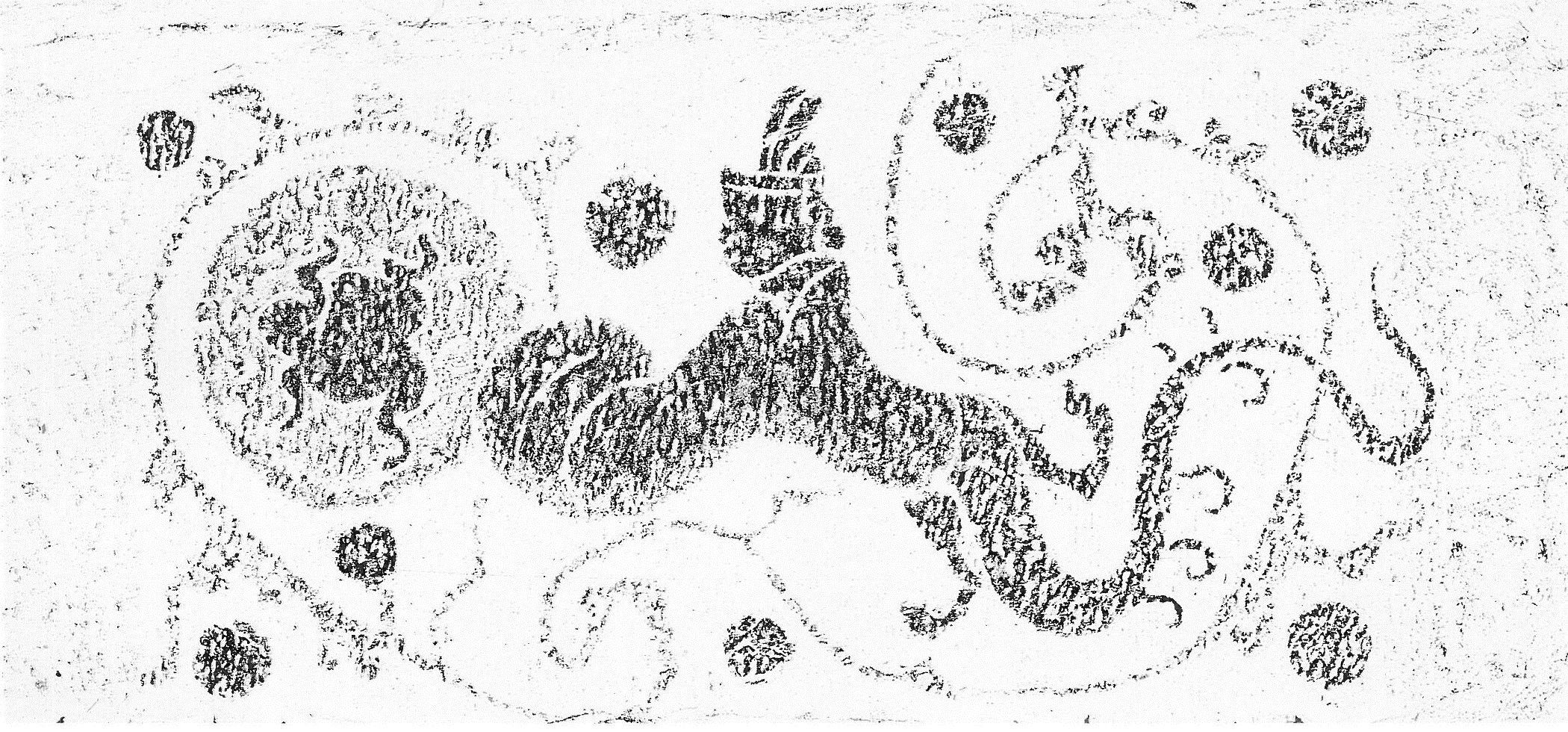Chang E 嫦娥, also called Heng E 姮娥 or Su E 素娥, is a mythological person. In the book Huainanzi 淮南子 she is called the spouse of Hou Yi 羿, who had begged the herb of immortality from the Queen Mother of the West 西王母. Before he was able to consume it, Chang E stole the drug, became an immortal and ascended to the moon. She transformed there into the "spirit of the moon" (yuejing 月精) or goddess of the moon (yueshen 月神) and obtained the shape of a toad (chanchu 蟾蜍). This is the most famous story about her.
 |
Rubbing of a relief stone from the Han period, showing Chang E ascending to the moon. In this image, Chang E has a snake-like body. In the background, nine stars and clouds can be seen, and in the mood, the shape of a toad is clearly visible. 65 × 119 cm. Unearthed in Xiguan 西關 in Nanyang 南陽, Henan, and kept in the Nanyang Painting Museum of the Han Dynasty (Nanyang Hanhua Guan 南陽漢畫館). Source: Zhongguo meishu quanji bianji weiyuanhui 《中國美術全集》編輯委員會, ed. (1993). Zhongguo meishu quanji 中國美術全集, Huihua bian 繪畫編, Vol. 18, Huaxiangshi huaxiangzhuan 畫像石畫像磚 (Shanghai: Shanghai renmin meishu chubanshe), no. 178. |
In the book Shanhaijing 山海經 it is told that Chang Xi 常羲 was the wife of Emperor Jun 帝俊 (Di Ku 帝嚳) and used to bath the twelve moons she had given birth to. The book Lüshi chunqiu 呂氏春秋 calls her the inventor of divination by the moon (zhan yue 占月).
A (meanwhile lost) chapter in the Da Dai Liji 大戴禮記 said that Chang Yi 常儀 (or Shang Yi 尚儀) was the daughter of Ju Zi 娵訾, wife of Emperor Di Ku. The oldest known book in which Chang E appears, is the lost text Guicang 歸藏. The phrase in it referring to Chang E is quoted in a commentary to a poem in the anthology Wenxuan 文選. It says that the brightness of the moon was so powerful that was is able to revive the death.
The story of the toad and the rabbit in the moon can be led back to a phonetic error. The writer and scholar Wen Yiduo 聞一多 (1899-1946) believed that the word gutu 顧菟(兔) (old Chinese: /kuo tʰuo/) "admiring the rabbit" or "gazing rabbit" mentioned in a verse of the elegy Tianwen 天問 of the collection Chuci 楚辭 "Poetry of the South" is phonetically very close to the word chanchu 蟾蜍 (old: /tɕi̯ɛm ʑi̯wo/ "toad", so that from the Han period 漢 (206 BCE-220 CE) on, following Wang Yi's 王逸 commentary, there was word of two animals in the moon, a rabbit and a toad.
 |
Relief brick from the Han period, showing a rabitt and a toad in the moon, and a green dragon (canglong 蒼龍) flying through the night sky. Many stars are seen in the background and can be identified as starry constellations by lines joining certain groups of them. One of these constellations is called "Green Dragon". 95 × 135 cm. Excavated in Pushan 蒲山 in Nanyang, Henan, and kept in the Nanyang Painting Museum of the Han Dynasty. Source: Zhongguo meishu quanji bianji weiyuanhui (1993), no. 111. |
The book Huainanzi deducts a lunar eclipse from the appetite of the toad that devours the moon. The book Guicang identified the toad as the "lunar spirit", while the Huainanzi says that the "spirit of the moon" was a crow.
The name of Chang E or Heng E should actually be written with the character 恒 "eternal, ever-lasting", but this character was regularly replaced with the character 常 in order to avoid the personal name of Emperor Wen 漢文帝 (202-157, r. 180-157 BCE) of the Han dynasty, Liu Heng 劉恒. Hong Yixuan's 洪頤煊 (1765-1833) commentary on the Huainanzi also says that the character 姮 is a post-Han invention, just like 嫦 instead of 常.
In some stories, Chang E is accompanied by another lunar girl called Qing Nü 青女 "Green Girl".